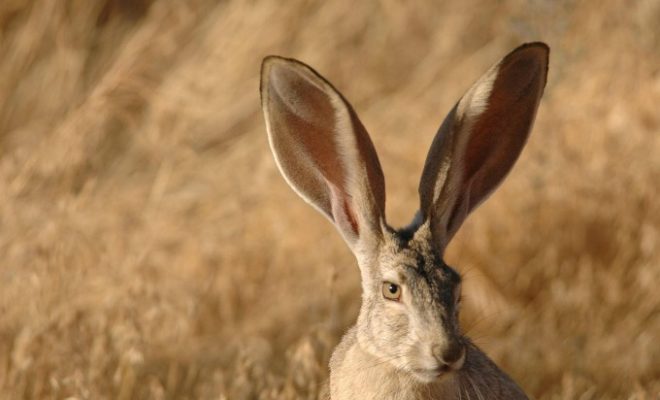If you’ve driven the vast stretches of our dusty, West Texas roads, you just might have spied a curious creature. The black-tailed jackrabbit can be found on brushlands, prairies, and meadows. They are often associated with pastures that have been grazed by livestock. Unlike other animals that need dense brush cover, jackrabbits use the high visibility of pasturelands to spot predators before they spot them. What few people know, though, is that these tall West Texas rabbits aren’t rabbits at all.
Nature
Wascally Wabbit: Texas Black-Tailed Jackrabbit Isn’t a Rabbit at All
Rabbit or Hare?

Photo: Pixabay/PublicDomainImages
Like Bugs Bunny, the Texas jackrabbit is not actually a rabbit, as his name implies, but a hare. Early settlers of the Southwest noted the animal’s long ears and called it a “jackass rabbit,” which was later shortened to the current common name.
According to Texas Parks and Wildlife, the difference between hares and rabbits is not only the length of their ears and legs, but also the way they look when they’re born. Hares have precocial babies, which means they are born fully haired, eyes open, and ready to hop. Rabbits have altricial babies, which means they’re born hairless, eyes closed and totally dependent on mom.
This Is One “Wascally Wabbit (Hare)!”

Photo: Pixabay/Skeeze
The black-tailed jackrabbit can be found throughout most of Texas and as far west as California. As the name implies, it has a black stripe on its tail that extends up the back, but otherwise is a grayish color on top and white underneath. A jackrabbit can reach a length of 24 inches and weigh from three to nine pounds; females are larger than the males. Their long legs allow them to outrun most predators — they can reach speeds of 35 mph in a zigzag fashion. Pound for pound, jackrabbits can outjump any critter in these parts, covering approximately 20 feet in a single bound. Those long ears are used not only for hearing but also as a cooling system, dispensing body heat on Texas’ hot days.
A jackrabbit’s diet consists mostly of woody vegetation during the winter and a feast of grasses, weeds, and cacti the rest of the year. They get most of their water requirements from the vegetation they eat. Texas Parks and Wildlife reports that it takes 128 jackrabbits to consume as much vegetation as one cow or seven sheep.


